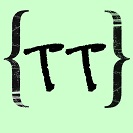If you have any tech questions in mind, do mail me. Will try to include them in the TT series.
As the post name suggests, today we will see about preparing images for the web.
Yes.. the prepping of images(I mean the Size, Resolution, Format) depends on their final use.
For example.. for publication you will need the highest resolution, for desktop printing lower, and for WEB or classroom use, lower still...!!! I will not go too deep technically, but would like to discuss what I think we need.
The reason I think I am writing this post..!!
Its the PAGE LOAD TIME...!!!
I have noticed many blog pages which take a lot of time to load... And the culprit..?? Images..!!
Web images take up the majority of the download time in most web pages.
Remember the line we frequently see..?? **Picture heavy Post** ;)
We crafters usually post a lot of photos of our projects!! And thanks to the internet connection in most of the places, it makes life miserable (at-least my life..!!). And you would have noticed that the unprocessed, high res pics will take more time to UPLOAD too..!!
I insist some post processing on the straight out of the camera (SOOC) photos.
The following 3 things would help you(us ;))
(1) Cropping -- To focus on the important elements
(2) Dimensions/Size -- Appearance and Time of download
(3) JPEG Format -- Photo-Compressing and Time of download
More details follow..
Image Cropping:
With Cropping, you can choose the part of the picture you want so that the important elements can be focused. It improves the visual appeal too..!!
Image Dimensions(Resizing):
File size dictates the time it takes to load your page. The file size is often more because of high image resolution quality. The larger the size, the longer it will take to load. People like me often don't have the patience to wait, so it would be a better idea to keep your file size less by reducing a bit of its resolution.
Yes!! size means dimensions means pixels means resolution means quality means clarity.
Oooh, it was hard for me too..!! Its ok..!!
The process of resizing images is simple, all the photo editors do this job.
Resizing can be done in two ways :
(1) where you manually drag the corners/sides of the image to re-size it
(2) where you give the final size of the image to get it re-sized by the editor
Image Format:
There are three types of images that can be used on web pages: GIF, JPG, and PNG.
JPG format is good for photographs. A photo can be highly compressed and still look very good on the web. JPEG/JPG format does the magic.
Compression means less-size, less-size means less loading time..!! :)
Please make sure that your image is in this format as this is ideal for the internet and for our photographs. I agree that some amount of quality is lost which doesn't matter..!! Try and let me know what you feel..!!
Conclusion:
So, what we conclude is that...prepping of SOOC images is necessary before we use them on the WEB..!! At-least for the sake of fellow bloggers..!! he hee..
Presentation of the product is more than half the sale!! Do you agree..??
Next on Techie-Tuesday, we will see a simple way of resizing an image.
How did you like this article..?? Your comments /suggestions are most welcome.
If you have any tech questions in mind, do mail me. Will try to include in TT series.
Please share with your friends/fellow crafters/bloggers if you find the article useful.
Love,
Sridevi MuraliKrishna

Techie-Teusday
About Techie-Teusday:
TechieTeusday(TT) is basically intended to share the TECH knowledge which I acquired
while craft-blogging. Posts will be on photo-editing, blogging, blogger features, Gmail and more. As of now, Techie-Thursday posts will be out on every alternative teusday.
You can see all the Techie-Tuesday posts here.


No comments:
Post a Comment
Ur comments/suggestions are most welcome.They mean a lot to me.